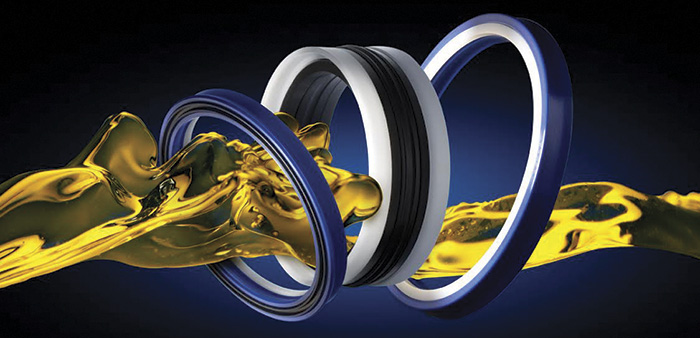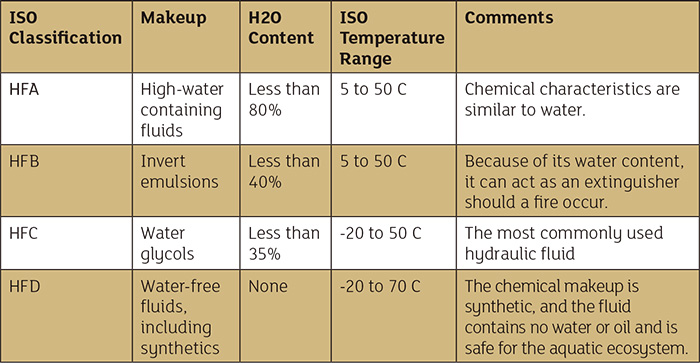In the sealing industry, compatibility influences the ability to form a chemically stable system. Using the wrong hydraulic fluid could result in a violent reaction that is disastrous for the entire hydraulic assembly. The fix is not simple; it could cost thousands of dollars in repairs and lost production time. To avoid these problems, users should ensure that the lip material or sealing material is compatible with planned media. Any biodegradable upgrades or media improvements must also be compatible with the sealing elastomer. Each year the U.S. uses about 200 million gallons of hydraulic oils. Of this volume, approximately 165 million gallons are mineral-based fluids. These types of mineral-based oils function at temperatures as low as -40 C to as high as 150 C with some exceptions. When choosing the right fluid, it is essential to assess physical and performance properties along with any original equipment manufacturer (OEM) approvals or specifications. Most fluid suppliers should be able to provide a product data sheet so that the design engineer can discern the best solution for the application. Mineral-based fluids include specialty fire-resistant hydraulic fluids and environmentally friendly, biodegradable fluids. The International Organization for Standardization (ISO) acknowledges four major groups of fire-resistant hydraulic fluids: high-water containing fluids (HFA), invert emulsions (HFB), water glycols (HFC) and water-free fluids including synthetics (HFD). Along with being fire-resistant, the chemical characteristics of HFA fluids are almost identical to that of plain water. As a result, this type of fluid is typically used in equipment that has been intended for use with water and is subjected to an open flame. HFA fluids are most commonly used in steel mills and coal mines. However, because these are fire-resistant fluids and not fire-proof fluids, HFA fluids can still ignite and burn, given the right conditions.
 Image 1. It is important to consider how hydraulic fluids will affect the hydraulic seal. (Graphics courtesy of Colonial Seal Company)
Image 1. It is important to consider how hydraulic fluids will affect the hydraulic seal. (Graphics courtesy of Colonial Seal Company) Table 1. Fire-resistant hydraulic fluids and their features
Table 1. Fire-resistant hydraulic fluids and their features
